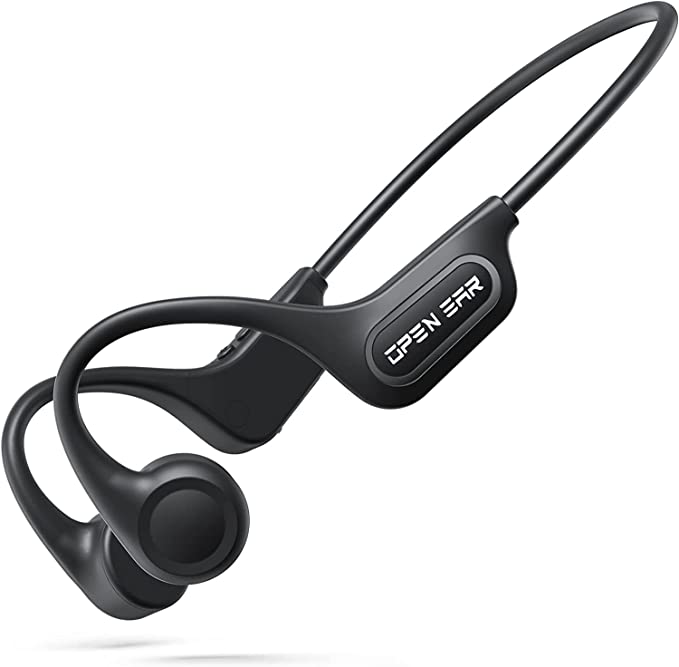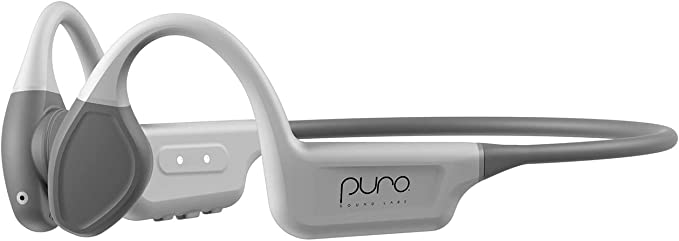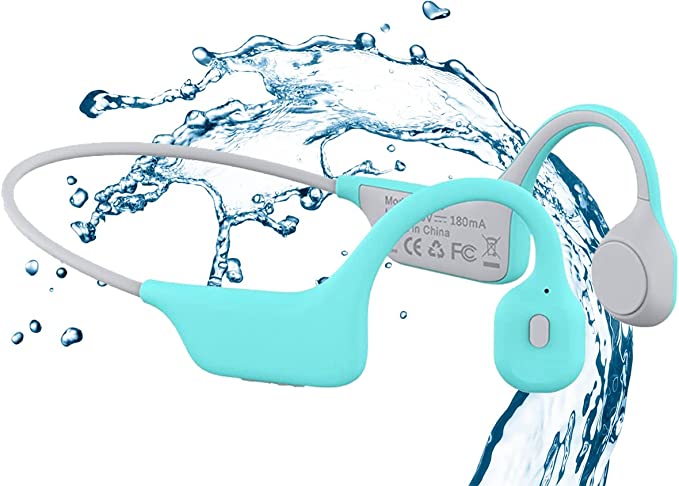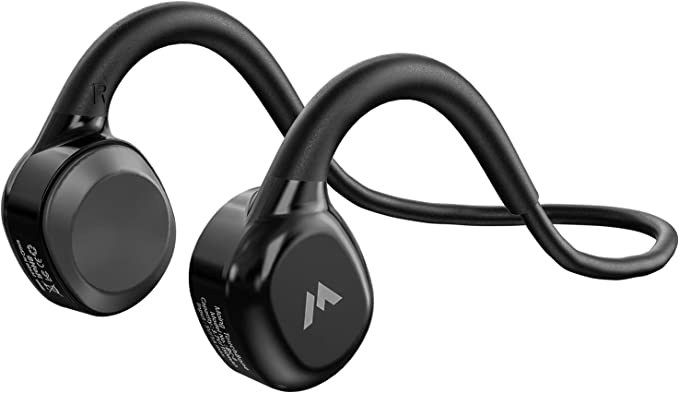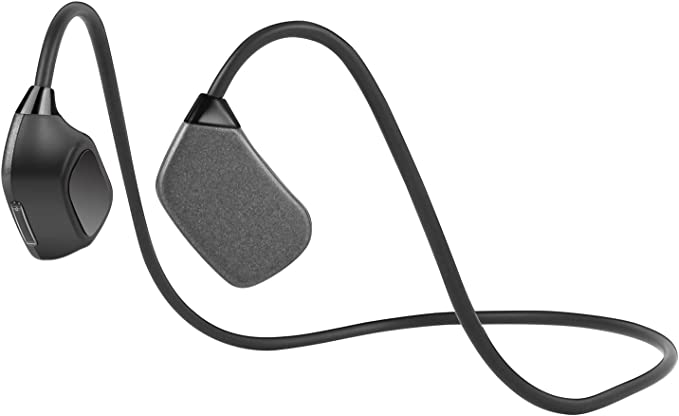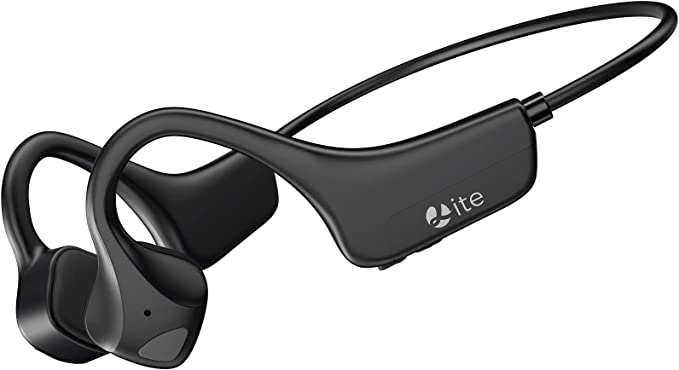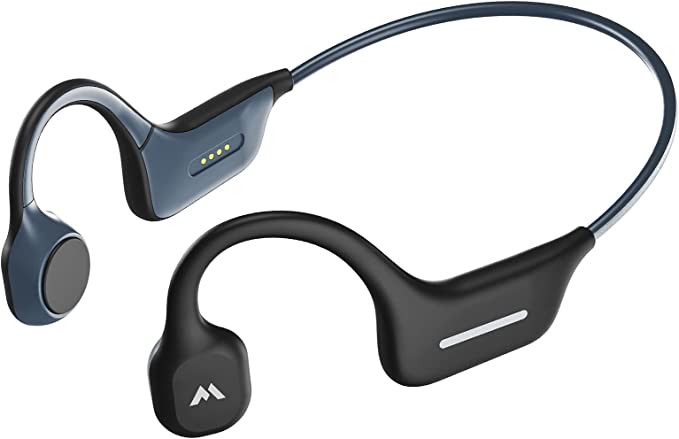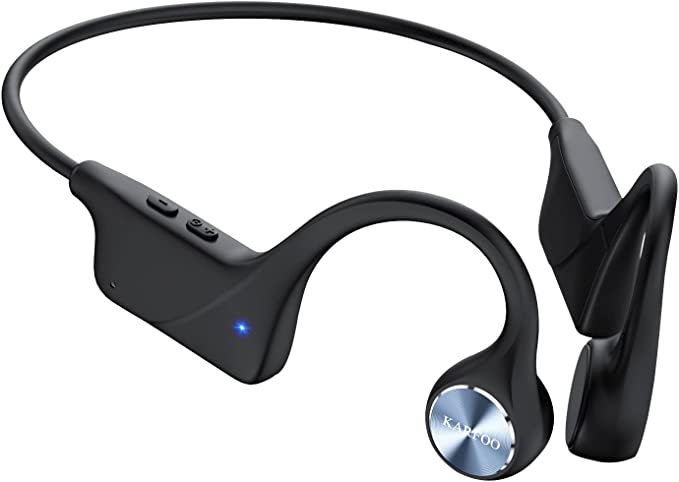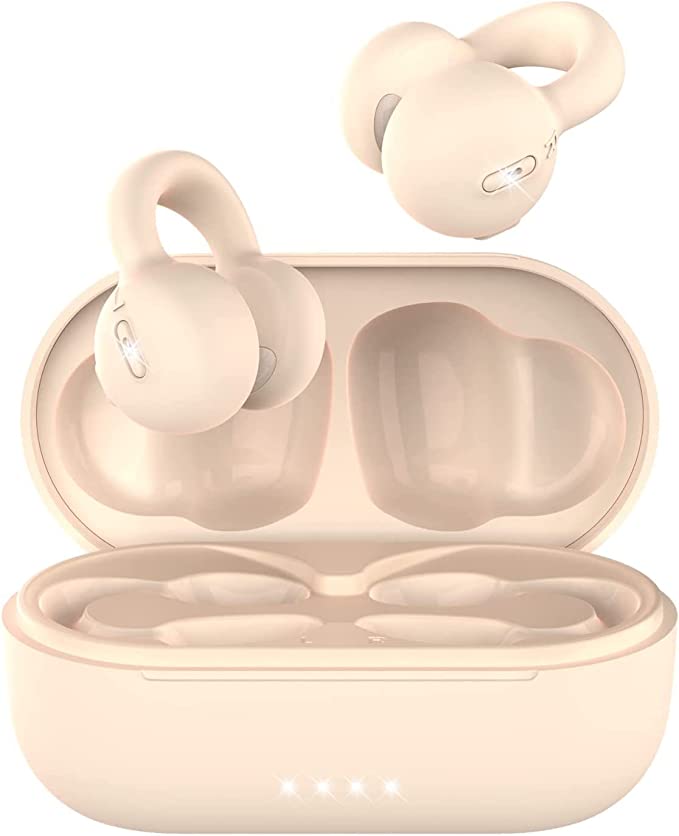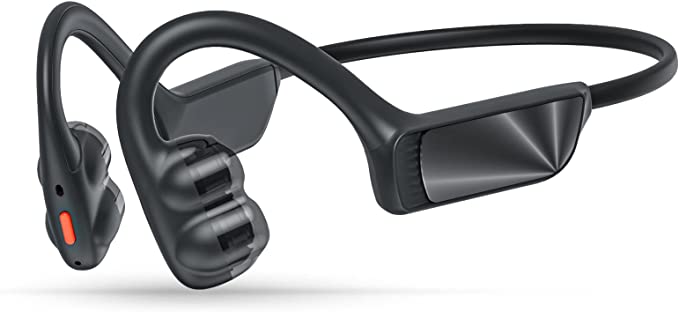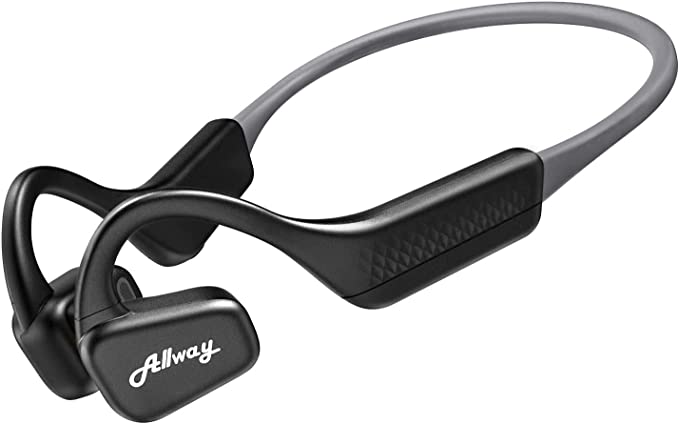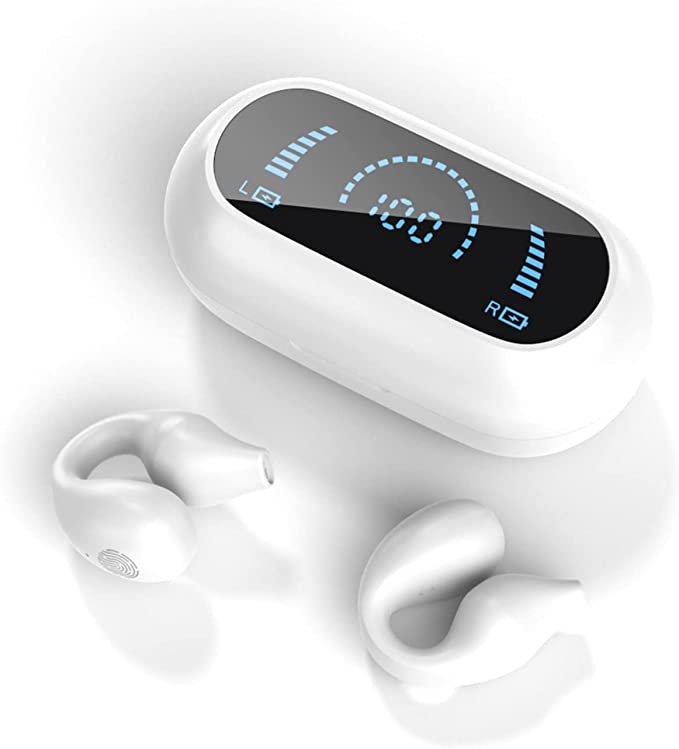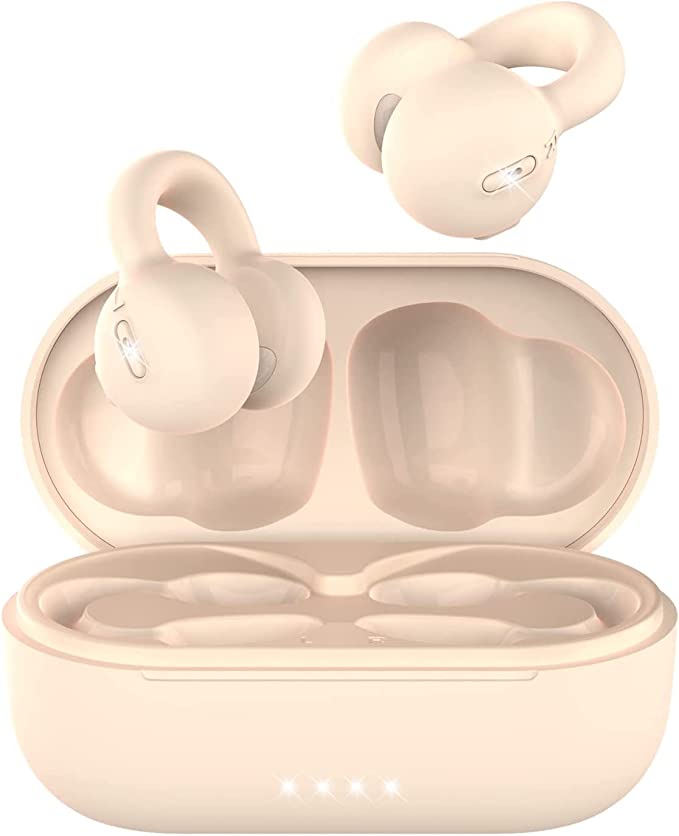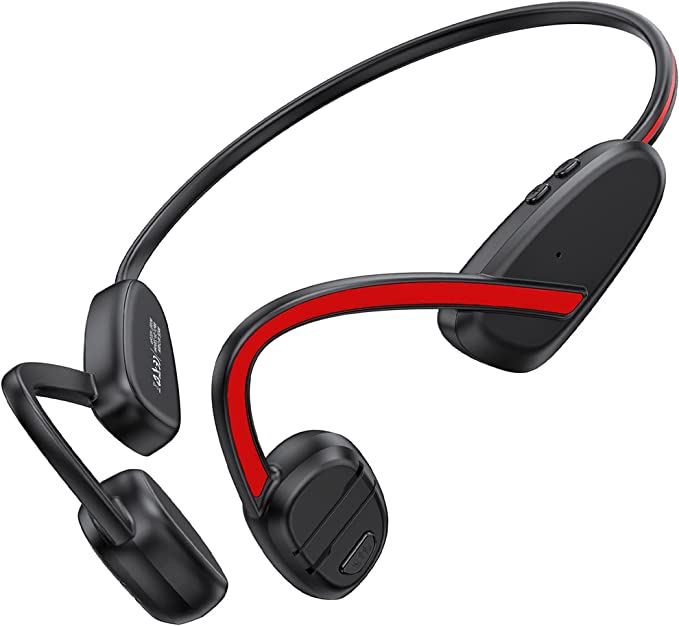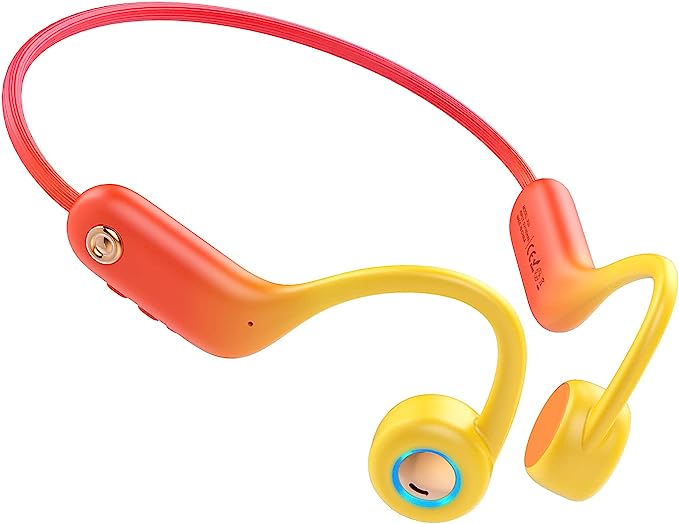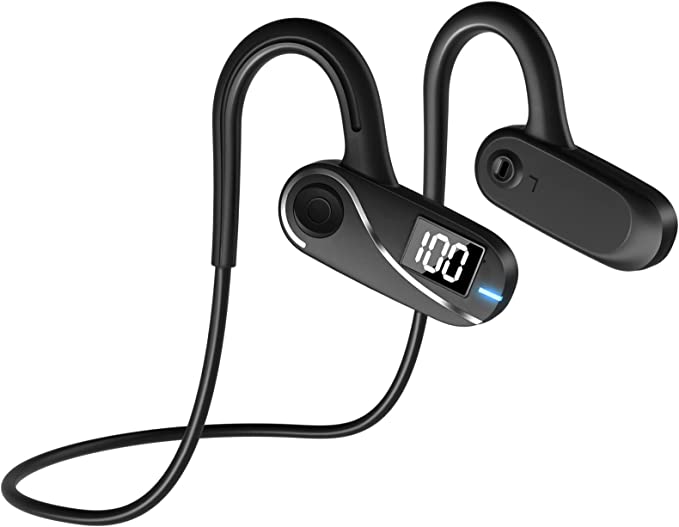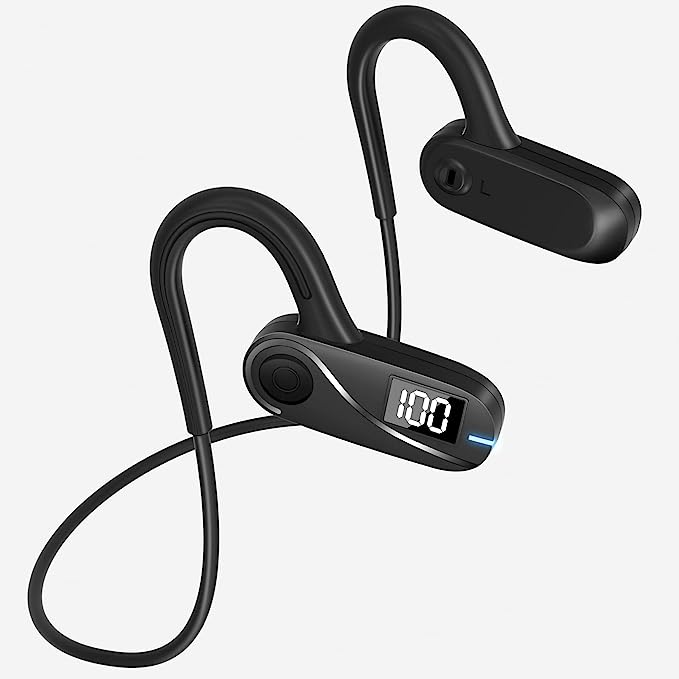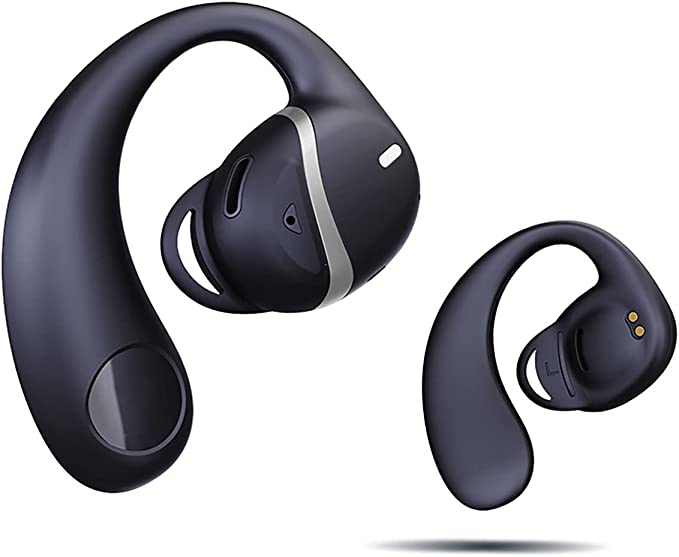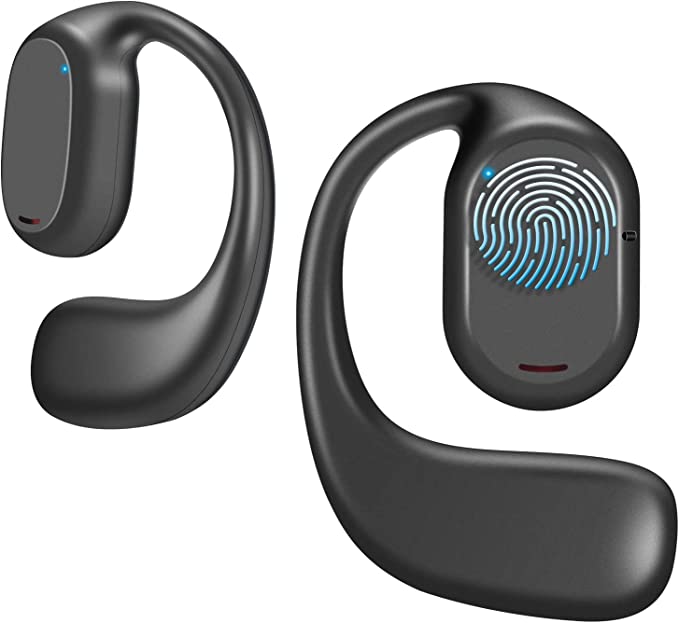Eixpdaye Le Bone Conduction Headphones: The Science of Open-Ear Audio for Active Lifestyles
Update on April 28, 2025, 3:07 p.m.
Imagine this: you’re cycling down a familiar city street, your favorite playlist pumping, providing the perfect rhythm for your ride. Suddenly, the distinct sound of a car horn cuts through the music, sharp and clear. You react instantly, adjusting your course. Or picture this: you’re on a morning run through the park, engrossed in a captivating podcast, yet you clearly hear the crunch of gravel signaling another runner approaching from behind. These aren’t futuristic scenarios; they represent a fundamental shift in how we can experience personal audio while remaining fully connected to the world around us, thanks to the rise of open-ear headphone technology.
For years, the trend in personal audio leaned towards deeper immersion, sealing off the ear canal with snug-fitting earbuds or enveloping ears with plush cups. This pursuit of sonic isolation delivered rich bass and detailed soundscapes, perfect for focused listening or escaping noisy environments. However, this very isolation creates a barrier, a sonic bubble that can detach us from our immediate surroundings. For anyone active outdoors – runners, cyclists, hikers, or even pedestrians navigating busy sidewalks – this lack of situational awareness isn’t just inconvenient; it can be a serious safety concern. How do you enjoy your audio without sacrificing your connection to the vital sounds of the environment? Enter the intriguing world of open-ear audio, with devices like the Eixpdaye Le Bone Conduction Headphones offering an accessible pathway to this different way of listening.

A Different Path for Sound: The Magic of Open-Ear Audio
To appreciate what makes open-ear headphones unique, let’s quickly revisit how we typically hear. Most sound reaches us through air conduction. Sound waves travel through the air, funneled by our outer ear into the ear canal, where they vibrate the eardrum. These vibrations are then transferred through tiny bones in the middle ear (the ossicles) to the fluid-filled inner ear, the cochlea, which converts them into electrical signals our brain interprets as sound. It’s a remarkably efficient system, but it relies on an open pathway through the ear canal.
Open-ear technology cleverly bypasses this traditional route, particularly in the case of bone conduction. Instead of sending sound waves into the ear canal, bone conduction transducers rest on the bones of the skull, typically the cheekbones just in front of the ears. These transducers generate micro-vibrations. Think of it like feeling the deep thrum of a bass speaker through a wall – you’re sensing the vibration directly. These vibrations travel through the solid structure of your skull directly to the cochlea in the inner ear, completely bypassing the eardrum. The magic? Your ear canals remain entirely unobstructed, open to the world. This allows ambient sounds – traffic noise, conversations, warning signals, the rustle of leaves – to reach your eardrums naturally, just as they would if you weren’t wearing headphones at all. While its popularization in consumer electronics is relatively recent, the principle has been understood for centuries and utilized in specialized hearing aids and military communication systems.
Now, the term “open-ear” itself is a category. While true bone conduction is one method, some devices achieve a similar outcome using small, precisely angled speakers that sit just outside the ear canal, directing sound towards it without physically blocking it (sometimes called air conduction open-ear). The Eixpdaye Le headphones are described by the manufacturer as a “True conducting headset that transmits sound through the metal vibrator,” placing them firmly in the bone conduction camp according to their description. However, it’s worth noting some user feedback suggests optimal sound is achieved when the earpieces are positioned very close to the ear canal, leaving room for interpretation about the exact mechanism at play. Regardless of whether it’s pure bone conduction or a highly effective near-ear speaker design mimicking the effect, the crucial outcome delivered by the Eixpdaye Le is the intended one: your ears remain unblocked.
Interestingly, the package includes a pair of earplugs. This might seem counterintuitive for a technology designed to let sound in. However, their purpose becomes clear when you consider noisy environments. By blocking the ear canal pathway to external ambient noise, the sound being delivered internally (whether via bone or near-ear speaker) becomes relatively clearer and more prominent against a quieter background. It’s a tool to manage the balance between your audio and particularly loud surroundings.

Crafting the Eixpdaye Le Experience: More Than Just Open Ears
Achieving that open-ear experience effectively and reliably, especially during active use, requires more than just the core audio delivery method. The Eixpdaye Le integrates several key technologies to create a cohesive user experience:
-
The Unseen Connection (Bluetooth 5.3): Staying connected wirelessly is paramount. These headphones feature Bluetooth 5.3. While specific implementations vary, Bluetooth 5.3 generally aims to offer improvements over previous versions in areas like connection stability (reducing dropouts during movement), potentially faster pairing, and better power efficiency. Think of it as a more robust, reliable wireless bridge carrying your audio stream, working diligently in the background so your music or podcast doesn’t falter mid-stride or mid-ride. User reports align with typical Bluetooth ranges, suggesting connectivity around 10 meters from the source device. As is standard for many headsets in this class, it connects to one device at a time.
-
Shrugging Off Sweat and Rain (IPX6): Active lifestyles often mean contending with the elements – sweat during intense workouts or unexpected rain showers. The Eixpdaye Le boasts an IPX6 waterproof rating. Let’s decode that: the ‘X’ means it hasn’t been rated for dust ingress, but the ‘6’ signifies protection against powerful water jets from any direction. Practically speaking, this means the headphones are built to withstand heavy perspiration and can easily handle being caught in the rain. You can focus on your run or cycle, knowing your audio gear is shielded. It’s not designed for swimming or submersion, but for land-based activities, IPX6 offers significant peace of mind.

-
Fueling Your Adventures (Battery & Charging): An untethered experience needs reliable power. The Eixpdaye Le is rated for approximately 8 hours of continuous music playback or talk time on a single charge. That’s enough to cover a long workday, several gym sessions, or even a marathon for many runners. When it’s time to recharge, it takes about 2 hours using a modern, convenient USB Type-C port – the same reversible connector found on many current smartphones and laptops. A substantial standby time of 168 hours means they won’t drain quickly when idle.
-
Lightweight Strength, Secure Fit (Titanium Alloy Frame): Comfort and stability are crucial, especially when you’re moving. Headphones that bounce, shift, or cause pressure points can ruin an otherwise great experience. The Eixpdaye Le utilizes a frame made from memory titanium alloy. This material is known for its remarkable combination of properties: it’s incredibly lightweight, yet strong and highly flexible. The “memory” aspect means it tends to return to its original shape after bending. The manufacturer highlights its 360° bendability, translating to a design that gently but securely wraps over the ears and around the back of the head, providing a stable fit that resists dislodging during vigorous activities like running or cycling, all while remaining light enough for extended wear.

Hearing is Believing (and Balancing): The Real-World Experience
Technology specifications tell only part of the story. How does the Eixpdaye Le, integrating these features, actually perform out in the world, according to the provided user insights?
-
The Gift of Awareness: The core promise – maintaining situational awareness – seems to be the primary draw for users. The ability to hear traffic, conversations, and other environmental cues while still enjoying personal audio is consistently highlighted as the major benefit, directly addressing the safety concerns associated with traditional earbuds during outdoor activities.
-
The Sound Signature Trade-off: This is where managing expectations becomes crucial. Open-ear audio physics often involve compromises in sound quality compared to sealed in-ear designs. Because the ear canal isn’t sealed, bass frequencies, which rely partly on that sealed pressure, tend to be less pronounced. Sound can also “leak” out more easily, potentially being audible to those nearby at higher volumes. This aligns with user reports often noting that, like many open-ear designs, the Eixpdaye Le’s bass response is lighter, and overall volume might feel insufficient in very noisy environments. It’s less a flaw of this specific product and more an inherent characteristic of the technology chosen to prioritize awareness. The sound is often described as clear for spoken word (podcasts, audiobooks) but less impactful for bass-heavy music.
-
Comfort Across the Miles: The lightweight titanium alloy frame generally contributes to positive comfort ratings (rated 4.3/5 by users in the provided data). The flexibility allows it to conform to different head shapes. However, as with any one-size-fits-most design, achieving a perfect fit for everyone can be challenging; one user noted they might not be ideal for individuals with very small heads, suggesting adjustability limitations.
-
Making the Call (Microphone): While designed primarily for listening, the inclusion of a microphone allows for hands-free calls. The manufacturer mentions CVC5.2 + DSP dual noise reduction technology, aimed at improving call clarity by reducing background noise picked up by the microphone. However, real-world call quality appears to be variable based on user feedback, with some reporting that callers had difficulty hearing them clearly, particularly during workouts or in windy conditions. This is a common challenge for microphones positioned further from the mouth, as found on many headphone types.

Conclusion: Finding Your Sonic Sweet Spot
The Eixpdaye Le Bone Conduction Headphones emerge as an accessible and practical entry point into the compelling world of open-ear audio. They successfully leverage the core benefit of this technology – allowing you to remain audibly connected to your surroundings – and package it with relevant features like the reliable connectivity of Bluetooth 5.3, the robust IPX6 water resistance for active use, a comfortable and secure titanium alloy frame, and respectable 8-hour battery life.
Understanding the science behind open-ear listening, particularly the bone conduction principle it employs (or effectively mimics), is key to appreciating both its strengths and its inherent limitations. The Eixpdaye Le isn’t aiming to compete with high-fidelity, noise-canceling headphones designed for critical listening in quiet environments. Instead, it offers a different kind of value proposition: the freedom to integrate audio into your active life without building a wall of silence between you and the world.
The trade-off – typically a less powerful bass response and potential sound leakage in exchange for invaluable situational awareness – is a conscious design choice inherent to the category. For runners, cyclists, outdoor enthusiasts, drivers, or anyone who prioritizes safety and environmental connection over pure audio fidelity, the Eixpdaye Le presents a compelling and affordable option. By understanding the technology and aligning it with your personal needs and listening habits, you can decide if these headphones strike the right balance for your sonic sweet spot, unlocking a safer and more aware way to enjoy your sound.

